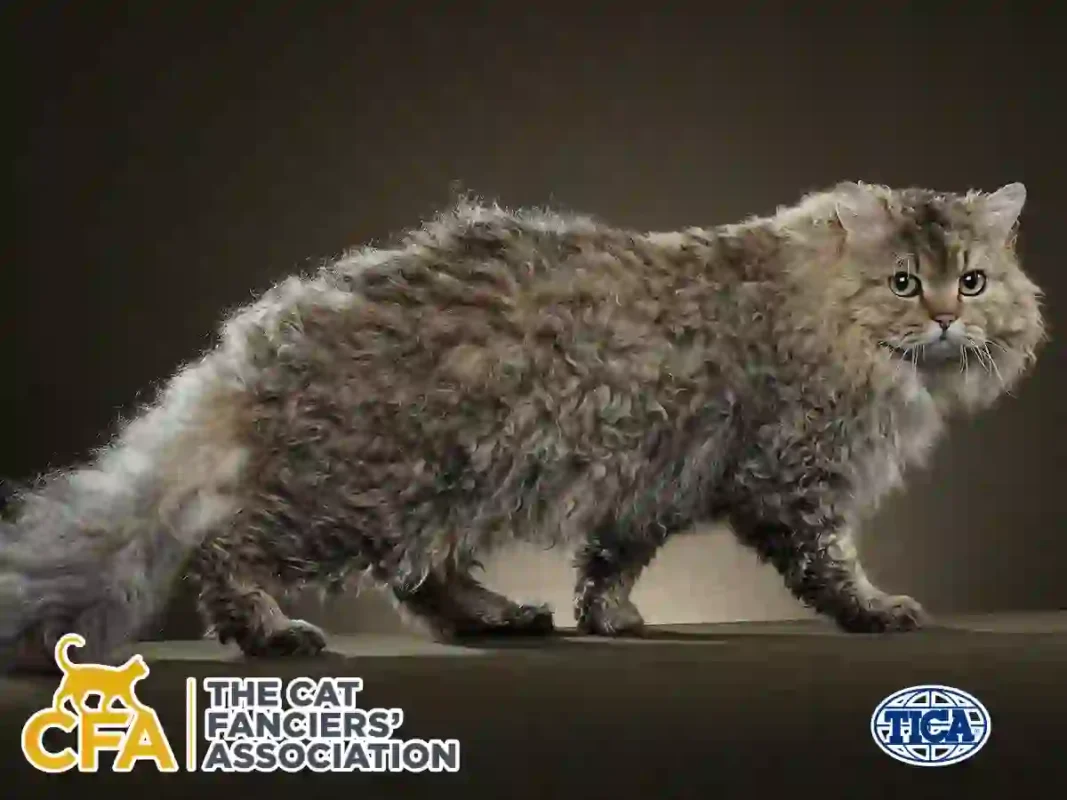The Selkirk Rex is a unique and charming cat breed distinguished by its curly coat, round face, and affectionate personality. While this breed may look like it jumped out of a fairy tale with its plush, lamb-like curls, its journey to official recognition by cat registries like the Cat Fanciers’ Association (CFA) and The International Cat Association (TICA) was a strategic and careful process grounded in genetics, breed standardization, and breeder dedication.
In this article, we’ll explore how the Selkirk Rex earned its place among recognized cat breeds, what standards different associations uphold for this breed, and what it means for breeders, owners, and cat lovers worldwide.
📜 The Origins of the Selkirk Rex
Before diving into breed recognition, it’s important to understand the breed’s background. The Selkirk Rex originated in Montana, USA, in 1987 when a curly-coated kitten was born to a rescued cat. This kitten, later named Miss DePesto, had a coat unlike any other. Her curly fur stood out and sparked the interest of a Persian cat breeder named Jeri Newman, who adopted Miss DePesto and started a breeding program using Persian, British Shorthair, and Exotic Shorthair lines.
Unlike the Cornish or Devon Rex, which have mutations causing different types of curl patterns, the Selkirk Rex gene is dominant, meaning only one copy is needed to produce the curly coat. This distinct genetic difference helped establish the breed as unique and suitable for formal recognition.
🏛️ Cat Fanciers’ Association (CFA) Recognition
The Cat Fanciers’ Association (CFA) is one of the world’s oldest and most prestigious cat registries. The Selkirk Rex’s road to CFA recognition involved rigorous evaluation, documentation of lineage, and demonstration of breed stability.
Timeline of CFA Recognition:
1990s: The Selkirk Rex entered the CFA’s Miscellaneous Class, allowing them to be exhibited at shows but not judged for titles.
2000: After demonstrating consistency in breed characteristics and genetic stability, the Selkirk Rex achieved Provisional status.
2000–2004: Continued participation in shows, detailed record keeping, and strategic breeding helped solidify the Selkirk Rex’s viability as a distinct breed.
2004: The Selkirk Rex was granted full Championship status by CFA, which means they can now compete for titles and points.
CFA Breed Standards:
The CFA standard for the Selkirk Rex focuses on:
Coat: Thick, plush, and curly throughout the body.
Head Shape: Round and broad with full cheeks.
Body Type: Substantial, muscular, and medium-to-large in size.
Eyes: Large, round, and expressive.
Personality: Laid-back and tolerant.
The CFA recognizes both longhair and shorthair variants, each with distinct grooming and care considerations.
🌍 The International Cat Association (TICA)
TICA is one of the most global cat registries, with members and breeders from around the world. TICA is known for being innovative and inclusive, often leading the way in recognizing newer breeds.
TICA Recognition Milestones:
1992: The Selkirk Rex entered TICA’s Experimental New Breed category.
1994: The breed progressed to Advanced New Breed, where they could be shown and evaluated for traits.
1998: The Selkirk Rex achieved Championship status, allowing it to compete for regional and international awards.
TICA Breed Standards:
TICA provides detailed descriptions for both the Selkirk Rex Longhair (SRS) and Shorthair (SRS). The breed standard includes:
Coat Texture: Soft, dense, and in loose curls, with a preference for a full, plush appearance.
Whiskers: Also curled, contributing to the breed’s whimsical look.
Temperament: Alert, active, and people-oriented.
Body Structure: Balanced, muscular, and neither extreme nor delicate.
TICA’s international influence helped the Selkirk Rex gain recognition outside of North America, particularly in Europe and Asia.
🐱 Other Cat Associations and Recognition
Beyond CFA and TICA, other international and national cat associations have also recognized the Selkirk Rex, further validating its place in the feline world.
1. GCCF (Governing Council of the Cat Fancy – UK)
The Selkirk Rex was recognized by the GCCF in the mid-2000s.
The GCCF standard aligns closely with the breed’s origin, focusing on health, structure, and coat quality.
The breed has gained popularity in the UK, with a growing number of breeders and exhibitions.
2. FIFe (Fédération Internationale Féline – Europe)
FIFe recognized the Selkirk Rex Cat in 2010, and it is now shown in many European cat shows.
They categorize the breed under “Category I: Exotic and Persian-like cats,” due to its lineage.
FIFe emphasizes coat health and temperament in its standards.
3. ACFA (American Cat Fanciers Association)
The Selkirk Rex is recognized in both long and short coat versions.
The breed enjoys consistent presence in ACFA shows, particularly in the Midwest and West Coast of the USA.
🔬 Breed Standardization and Genetic Considerations
One of the most critical aspects of breed recognition is genetic stability. Associations require that a breed demonstrate:
Consistent physical traits across generations.
Minimal genetic health issues.
Clear lineage records.
For the Selkirk Rex, this meant carefully managing outcrosses in early generations (with Persians, British Shorthairs, and Exotics) while eventually closing the gene pool to solidify the breed’s identity.
Most associations have now limited or disallowed outcrossing to maintain purity and predictability.
🏆 Why Breed Recognition Matters
Breed recognition isn’t just a formality—it carries real benefits and responsibilities:
For Breeders:
Allows participation in cat shows and competitions.
Provides a recognized standard to guide breeding.
Opens access to breeding programs and registries.
For Owners:
Ensures predictability in traits and health.
Assures buyers/adopters of breed authenticity.
Creates a community of enthusiasts and experts.
For the Breed:
Promotes responsible breeding practices.
Helps preserve genetic health.
Increases awareness and popularity in ethical ways.
The Selkirk Rex’s journey to breed recognition is a testament to its unique charm and the dedication of breeders who saw potential in a single, curly-coated kitten. Today, the Selkirk Rex stands proudly recognized by major associations like CFA, TICA, GCCF, and FIFe, bringing joy to homes around the world with its teddy bear looks and gentle heart.
As recognition continues to expand and breed standards evolve, the Selkirk Rex remains one of the most distinct and delightful breeds in the feline world—a true celebration of nature’s creativity and human care.



